Manaslu Trek in January – Nepal is a paradise for trekkers, offering a plethora of breathtaking trails. The Manaslu Circuit Trek stands out as one of the most captivating journeys. Tucked away in the western region of Nepal, the Manaslu region is renowned for its awe–inspiring landscapes. But also for its rich biodiversity, and cultural heritage.

While the Manaslu Trek in January may not be the most popular time for trekking in the region, it presents a unique opportunity. You can experience the serene beauty of the Manaslu Trek with fewer crowds and an enchanting winter ambiance. In this blog post, we’ll explore everything you need to know about the Manaslu trek in January.
Highlights of the Manaslu Trek
Majestic Mountain Views
The Manaslu Trek rewards trekkers with awe–inspiring views of snow–capped peaks. Including the majestic Mt. Manaslu, the eighth–highest mountain in the world.

Cultural Immersion
The trek offers a glimpse into the unique culture and traditions of the local communities. Including the warm hospitality of the Gurung and Tibetan–influenced villages.
Remote Wilderness
Unlike some of the more popular trekking routes, the Manaslu Circuit Trek in January offers a quieter and more off-the-beaten-path experience. This allows you to immerse yourself in pristine nature and tranquility.
Serene Winter Beauty
Trekking in January offers a unique perspective on the Manaslu region. The snow–covered landscapes, frozen waterfalls, and glistening peaks create a magical winter wonderland.
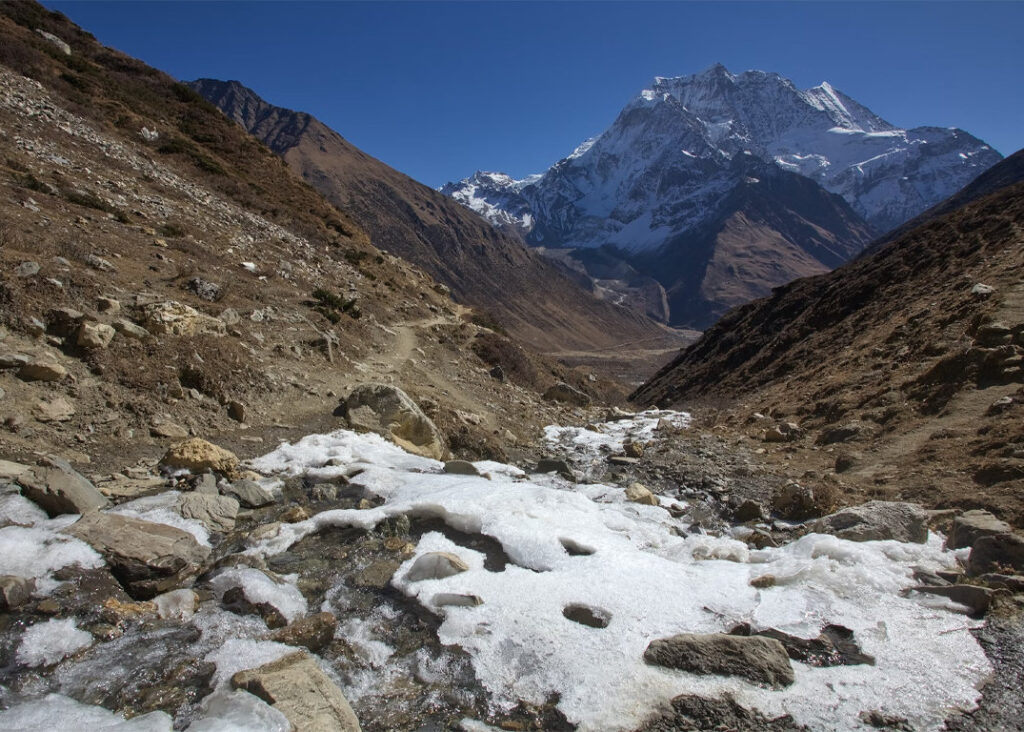
The tranquility of the surroundings, undisturbed by large crowds. Allows you to connect deeply with nature and appreciate its serene beauty.
Book Now: Manaslu Circuit Trek
Larkya La Pass
Crossing the Larkya La Pass is one of the major highlights of the Manaslu Trek. Standing at an elevation of 5,106 meters, this challenging mountain pass offers breathtaking views of the surrounding peaks and glaciers.
The sense of achievement upon reaching the pass is immense, and the panorama of the snow-clad mountains is truly unforgettable.
Natural Hot Springs
After days of trekking in the chilly winter weather, you have the chance to relax and rejuvenate in natural hot springs along the trail. These soothing thermal baths provide a welcome respite and help soothe tired muscles, adding a touch of luxury to your trekking experience.
Wildlife Spotting
While wildlife sightings can be rarer during the winter season, the Manaslu region is still home to a diverse range of fauna.
With luck and patience, you may catch glimpses of Himalayan musk deer, blue sheep, and various bird species, adding an element of wildlife exploration to your trek.
Weather in January
January is considered the winter season in Nepal, and the Manaslu region experiences cold temperatures and occasional snowfall during this time. It’s important to be well-prepared for the challenging weather conditions. Here are some key points about the weather in January:
Temperature
In January, temperatures in the lower regions of the Manaslu Trek can range from around 5°C (41°F) during the day to -10°C (14°F) or even colder at night. As you ascend to higher altitudes, the temperatures drop further, and it’s not uncommon to encounter sub-zero temperatures.

Snowfall
January often sees occasional snowfall in the Manaslu region, adding a picturesque layer of snow to the landscape. While the snow can enhance the scenic beauty of the trek, it also means that certain sections of the trail may be covered in snow, making them more challenging to navigate.
Clear Skies
Despite the cold temperatures, January can offer clear and sunny days in the Manaslu region. These clear skies provide excellent visibility and panoramic views of the surrounding mountains.
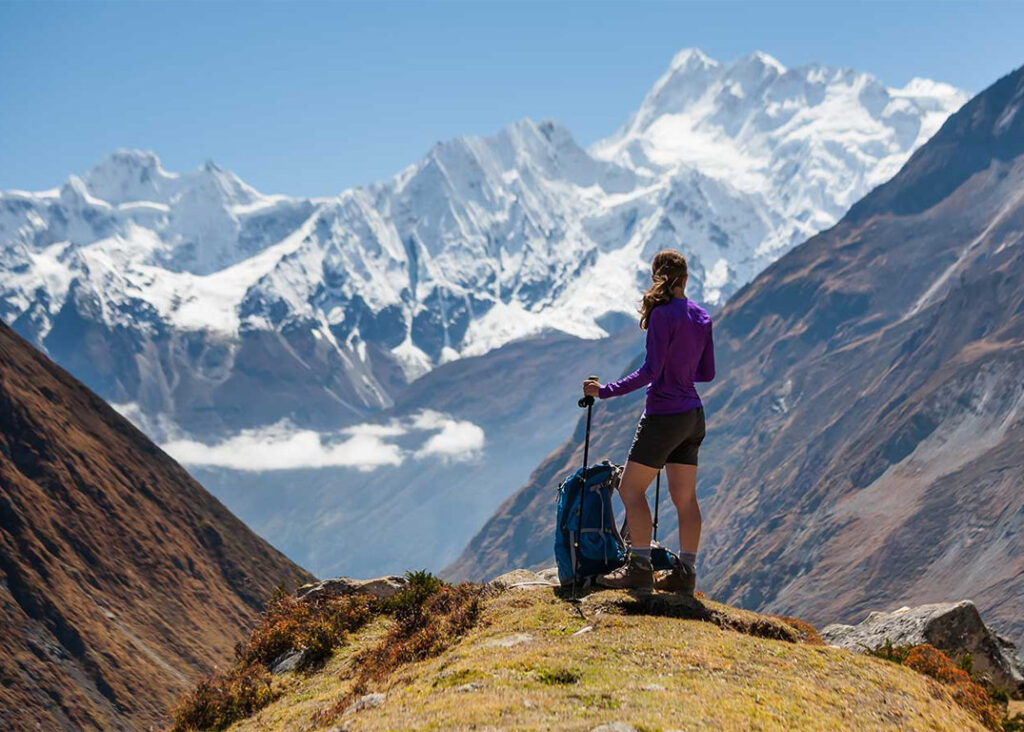
However, it’s important to note that weather conditions can change rapidly in the mountains, and even clear days can be accompanied by cold winds.
Precipitation
While snowfall is possible in January, the overall precipitation levels tend to be lower compared to other months. However, it’s still essential to be prepared for occasional snow or rain showers during your trek. Make sure to have appropriate rain gear and waterproof layers to stay dry and comfortable.
High Altitude Considerations
It’s important to be aware that as you ascend to higher altitudes, the temperatures become colder and the effects of altitude can be more pronounced. Acclimatization is crucial to ensure your safety and well-being. Take sufficient rest days, stay hydrated, and listen to your body’s signals. It’s advisable to consult with experienced guides or trekking agencies to plan your itinerary and acclimatization properly.
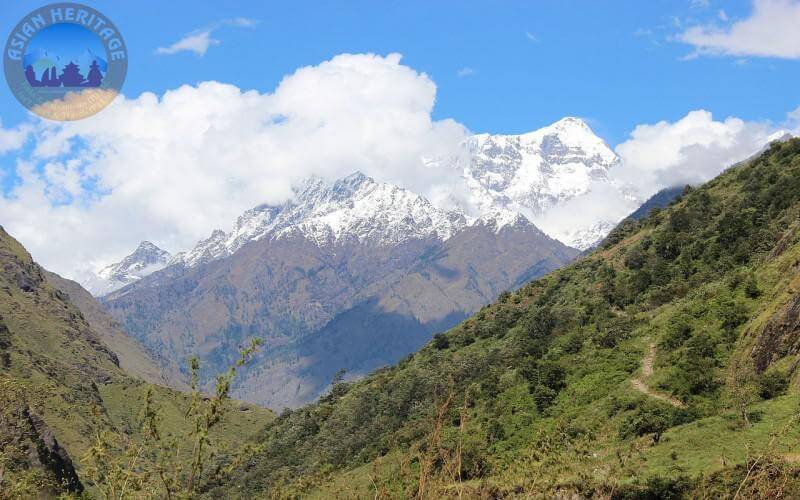
To prepare for the weather conditions in January, pack a suitable range of clothing layers. This should include warm base layers, insulating mid-layers, a down jacket for added warmth, thermal pants, fleece–lined trousers, a good quality windproof and waterproof jacket, gloves, a hat, and a buff or scarf to protect your face from cold winds. Sturdy and waterproof trekking boots with warm socks are essential to keep your feet dry and comfortable.
Flora and Fauna
The Manaslu region boasts diverse flora and fauna. Although vegetation is limited due to the altitude, lower regions are adorned with rhododendron forests, bamboo groves, and pine trees. Wildlife enthusiasts may spot Himalayan musk deer, blue sheep, snow leopards, and various bird species, adding to the trek’s natural charm.
Flora
Rhododendron Forests
In the lower regions of the Manaslu Trek, particularly below 3,000 meters, you may still find some rhododendron forests. While these vibrant flowers are not in full bloom during January, their evergreen foliage adds color to the landscape.

Bamboo Grove
Along the lower sections of the trek, you may come across bamboo groves, which provide a unique sight with their tall and slender stalks.

Pine and Fir Trees
As you ascend higher into the Manaslu region, you’ll encounter forests dominated by pine and fir trees.

These evergreen trees maintain their foliage even during the winter months, adding a touch of greenery to the surroundings.
Alpine Vegetation
At higher altitudes, the vegetation becomes sparse due to the harsher weather conditions. You’ll find hardy shrubs and alpine grasses clinging to rocky slopes, adding a rugged beauty to the landscape.
Fauna
Himalayan Musk Deer
The Manaslu region is home to the elusive Himalayan musk deer. These small, deer-like mammals are known for their prominent fangs and musk glands.

While spotting them can be challenging, their presence adds to the region’s biodiversity.
Blue Sheep (Bharal)
Another iconic animal of the Manaslu Trek is the blue sheep, also known as Bharal. These agile mountain goats can be seen navigating the steep slopes and cliffs, displaying their impressive climbing skills.
Snow Leopards
Though extremely rare to spot, the snow leopard inhabits the higher reaches of the Manaslu region. Known for its elusive nature, this magnificent big cat roams the mountains stealthily.
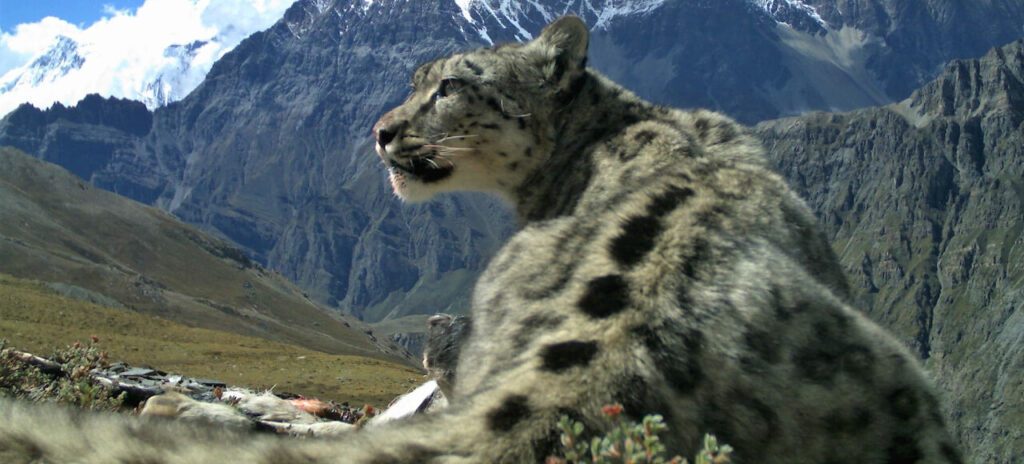
While sightings are rare, the presence of snow leopards adds to the region’s allure.
Various Bird Species
The Manaslu region is rich in avian diversity. In January, you may spot Himalayan monals, snow pigeons, Himalayan griffons, and other high-altitude bird species.

Their calls and occasional sightings add an element of delight to your trekking experience.
Tips
It’s important to note that wildlife sightings can be challenging and are not guaranteed. Animals tend to be more elusive during the winter months, and their movements may be limited due to the harsh weather conditions. However, the natural beauty of the surroundings and the occasional glimpse of wildlife enhance the overall trekking experience.
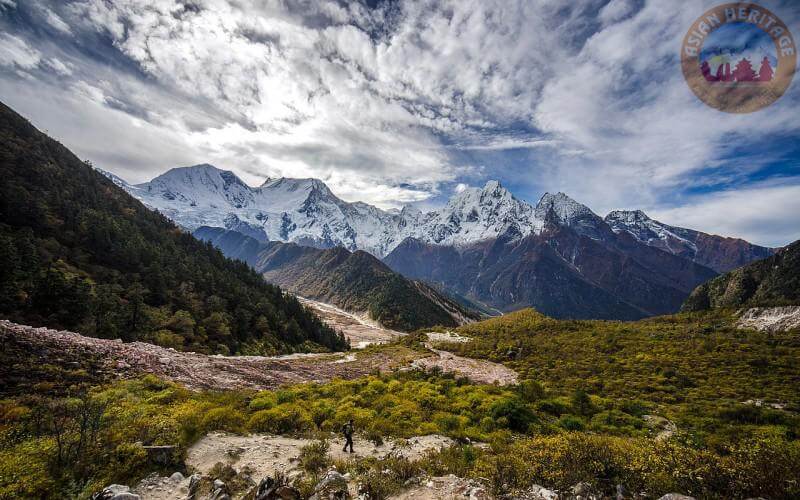
While exploring the Manaslu Trek, make sure to respect the natural habitat and maintain a safe distance from wildlife. Avoid littering and follow the guidelines set by local authorities to preserve the fragile ecosystem and ensure the long-term sustainability of the flora and fauna in the region.
As you journey through the diverse landscapes of the Manaslu region, keep a keen eye out for the flora and fauna that grace the trail. These natural wonders contribute to the beauty and ecological significance of the area, making your trek an immersive and enriching experience.
Surroundings and Scenic Beauty
The Manaslu Trek takes you through picturesque landscapes, including deep valleys, raging rivers, and charming villages. Crossing the Larkya La Pass (5,106 meters), the highest point of the trek, rewards you with stunning panoramic views of the surrounding peaks and glaciers, creating memories that will last a lifetime.
Essential Gear
To ensure a successful and comfortable trek, it is essential to pack appropriate gear for January’s challenging weather conditions.

Some necessary items include warm layers, a down jacket, thermal clothing, a sturdy pair of trekking boots, insulated gloves, a hat, sunglasses, a sleeping bag suitable for cold temperatures, and a good-quality backpack.
Crowd and Festivals
January is considered the off-season for trekking in Nepal, and the Manaslu Trek sees significantly fewer trekkers compared to peak seasons. This makes it an excellent choice for those seeking solitude and tranquility amidst nature.
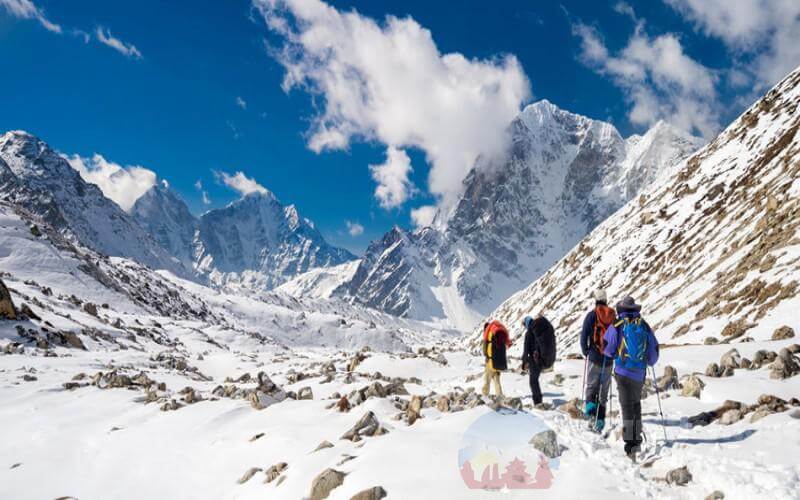
Furthermore, the region celebrates several local festivals in January, providing an opportunity to witness traditional rituals and cultural performances.
Transportation from Manaslu to Kathmandu
To return to Kathmandu from the Manaslu region, trekkers typically follow the trail back to Soti Khola or take a vehicle from Dharapani to Besisahar. From Besisahar, regular buses and private vehicles are available for the journey back to Kathmandu, offering a scenic and comfortable ride.
Side Treks and Extensions
For those with more time and a desire for further exploration, there are a few side treks and extensions that can enhance your Manaslu trekking experience:
Tsum Valley Extension
Tsum Valley lies in the northern part of the Manaslu region and is renowned for its cultural significance and breathtaking landscapes.

This extension allows you to delve deeper into Tibetan-influenced villages, ancient monasteries, and stunning Himalayan vistas.
Manaslu Base Camp
If you have additional days and a higher level of trekking experience, consider extending your journey to the Manaslu Base Camp.
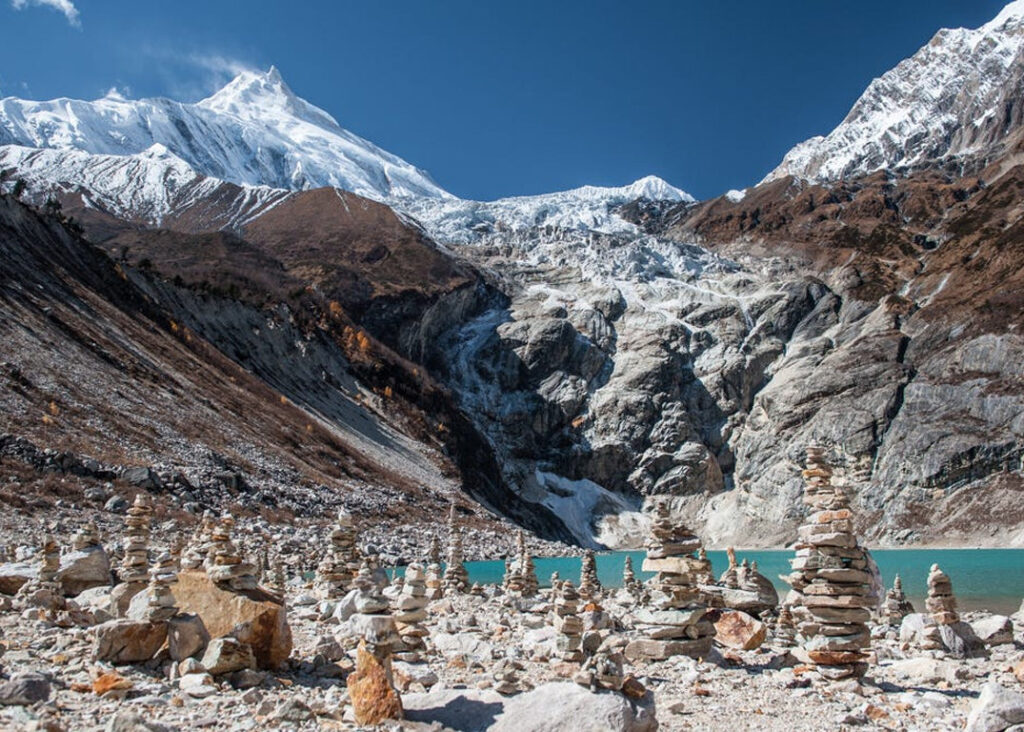
This trek takes you closer to the majestic Mt. Manaslu, providing an opportunity to admire its grandeur and immerse yourself in the high-altitude wilderness.
Annapurna Circuit
Another popular option is to connect the Manaslu Trek with the famous Annapurna Circuit.

This extended trek offers a diverse range of landscapes, from lush valleys to arid landscapes, and rewards you with incredible views of the Annapurna massif and other prominent peaks.
Difficulty and Preparations
The Manaslu Trek is considered a moderately challenging trek, requiring a good level of fitness and prior trekking experience. The trek involves long and steep ascents and descents, crossing high mountain passes, and walking on rugged terrains. The altitude can also pose challenges, so it’s essential to acclimatize properly and listen to your body.
Book: Manaslu & Tsum Valley Trek
To prepare for the trek, engage in regular physical exercises such as hiking, jogging, and strength training. Building endurance and stamina will help you tackle the trek’s demanding sections. Additionally, consult with a trekking agency or a professional guide to ensure you have the necessary permits, proper equipment, and a well-planned itinerary.
Conclusion
Undertaking the Manaslu Trek in January offers a unique opportunity. This is the season to experience the beauty of the region in a peaceful and serene setting. While the weather may be cold and the trek challenging, the rewards are immense.
From majestic mountain views to cultural immersion and off-the-beaten-path exploration, the Manaslu Trek promises an unforgettable adventure. With the right preparations, gear, and a spirit of adventure. You can embark on a journey that will leave you with lifelong memories of Nepal’s mesmerizing landscapes and warm-hearted people.
Let our expert team at Asian Heritage Treks and Travel take care of everything — from guided tours to personalized packing tips and travel arrangements.
Plan My Manaslu Trip







